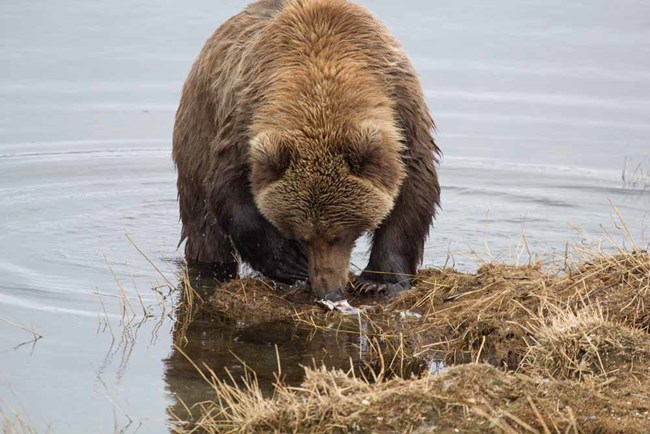Last updated: December 4, 2020
Article
How bears and salmon shape their ecosystem

Bears are apex predators and influence their ecosystems through predator-prey relationships. Likewise, salmon "feed" the ecosystem not only by feeding bears, but also with the nutrients their carcases provide to streams and riparian vegetation. But the influences of salmon and bears are much more complex that. Bears and salmon shape everything from seed dispersal and small mammals to ungulate and other predator population dynamics. And that's just to start. Many more interactions deserve further exploration.
A group of U.S. and Canadian university ecologists in collaboration with biologists from the Alaska Department of Fish and Game, the Oregon Department of Fish and Wildlife, the National Park Service, and several NGOs recently conducted a review and summary of the ecology of systems comprised of both bears and salmon. This work appears in the journal Frontiers in Ecology and Evolution.
Community Ecology and Conservation of Bear-Salmon Ecosystems
Abstract
Apex predators play keystone roles in ecosystems through top-down control, but the effects of apex omnivores on ecosystems could be more varied because changes in the resource base alter their densities and reverberate through ecosystems in complex ways. In coastal temperate ecosystems throughout much of the Northern Hemisphere, anadromous salmon once supported abundant bear populations, but both taxa have declined or been extirpated from large parts of their former ranges with limited research on the consequences of diminished or absent interactions among species. Here we review the biogeography of bear-salmon interactions and the role of salmon-subsidized bears in (1) resource provisioning to plants and scavengers through the distribution of salmon carcasses, (2) competition among bears and other large carnivores, (3) predation of ungulate neonates, (4) seed dispersal, and (5) resource subsidies to rodents with seed-filled scats. In addition to our review of the literature, we present original data to demonstrate two community-level patterns that are currently unexplained. First, deer densities appear to be consistently higher on islands with abundant brown bears than adjacent islands with black bears and wolves, and moose calf survival is higher at low bear densities (<∼25 bears per 100 km2) but is constant across the vast majority of bear densities found in the wild (i.e., ∼>25 bears per 100 km2). Our review and empirical data highlight key knowledge gaps and research opportunities to understand the complex ecosystem effects related to bear-salmon interactions.
Levi, T., G. V. Hilderbrand, M. D. Hocking, T. P. Quinn, K. S. White, … W. Deacy, et al. 2020. Community ecology and conservation of bear-salmon ecosystems. Frontiers in Ecology and Evolution 8: e513304.
